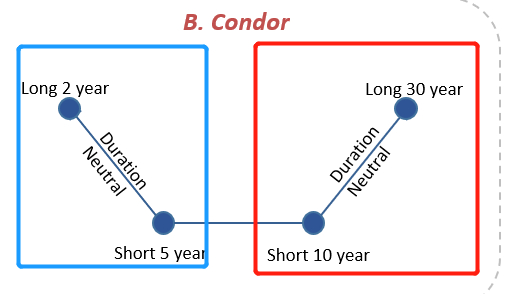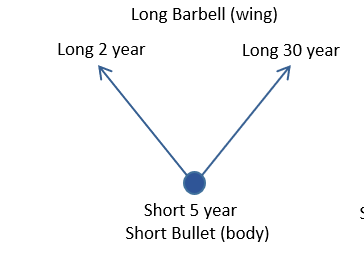NO.PZ2019103001000047
问题如下:
Six months later, Hirji reviews Canadian government bonds for a Malaysian institutional client. Prégent and Hirji expect changes in the curvature of the yield curve but are not sure whether curvature will increase or decrease. Hirji first analyzes positions that would profit from an increase in the curvature of the yield curve. The positions must be duration neutral, and the maximum position that the Malaysian client can take in long-term bonds is C$150 million. Hirji notes that interest rates have increased by 100 basis points over the past six months. Selected data for on-the-run Canadian government bonds are shown in Exhibit 2.

Based on Exhibit 2, the amount that Hirji should allocate to the 2-year bond position is closest to:
选项:
A.C$331 million
C$615 million
C$1,492 million.
解释:
C is correct.
In order to take duration-neutral positions that will profit from an increase in the curvature of the yield curve, Hirji should structure a condor. This condor structure has the following positions: long the 2-year bonds, short the 5-year bonds, short the 10-year bonds, and long the long-term bonds. Hirji’s allocation to the 2-year bond position is calculated as follows:
The C$150 million long-term bonds have a money duration of C$150 × 1,960 = C$294,000
Allocation to 2-year bond = Money duration of long-term bonds/PVBP of 2-year bond
2-year bond position = C$294,000/197 = 1,492.39 or C$1,492 million
第一步,根据duration neutral求出买入的2年期和long-term债券各自权重:4.78+8.89=1.97x+19.6(1-x),得到x=34%, 1-x=66%
第二步,计算出买入长期债券的money duration=1960*150=294000,再除以权重66%,得出买入portfolia的money duration=445454
第三步,(445454*0.34)/197=769,得出买入769m的2年期债券





